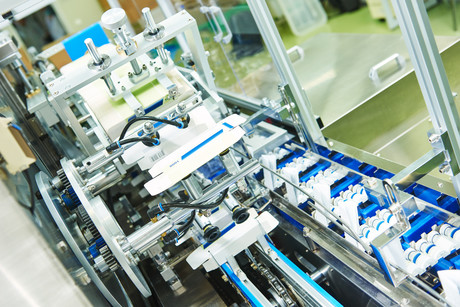2018 CEO Insights: David Duncan
By David Duncan, Managing Director, SICK Pty Ltd and SICK New Zealand Ltd
Tuesday, 30 January, 2018

What opportunities do you predict for your industry in 2018?
Embracing the principles and implementation of Industry 4.0 in the manufacturing, logistics and process industry sectors will provide massive opportunities for benefits to be gained, and to remove inefficiencies — driving Australian manufacturing to be competitive in a global context.
As part of Industry 4.0, various applications and topics are discussed in a manner that generates public interest. At the machine level, that includes what is known as human-robot collaboration. Track-and-trace, quality control and state-of-the-art production logistics systems can be modelled both at machine and cloud level. Dynamic real-time optimised, self-organising value creation processes such as flexible manufacturing are typical examples of applications in the cloud. Process automation solutions that are typical for SICK, such as data acquisition and preparation used to control combustion processes and to document compliance with regulations, have to be assigned to a system level.
Industry 4.0 is the linking of industrial production with state-of-the-art information and communication technology — shifting to dynamic, real-time, optimised, self-organising and cross-company value creation networks. This is the future for all industry sectors to embrace, and to be disruptive or be disrupted.
What impact will big data and smart device technology have on your industry in 2018?
The collection of data from smart device technology and the analysis of this collected data to provide information will be a game changer for all industry sectors. Considerable gains in efficiency will be achieved for individual machines or the complete plant, which is one of the core principles of Industry 4.0: to add value.
If the data collected by a sensor is typically shared with higher-level information systems, this is typically being referred to within automation circles as an Industry 4.0 sensor. The key characteristic of Industry 4.0 is how it liberates the data world from the hardware and software structures that surround it. This data world, in turn, is the foundation of autonomous decisions that make it possible for value-creation networks to organise themselves and further drive industrial automation to new heights.
What do you see as the biggest challenges that will face your industry in 2018?
SICK sensor technology in the context of Industry 4.0 ensures that customers are able to express their reality in data (“get data”) and employ it purposefully for their application (“use data”). The issue of data security is therefore of key importance. The topics with which sensor technology has to deal with in the data world of Industry 4.0 are at a higher data aggregation level and involve networking, data security and applications.
When it comes to networking, the first important aspect relates to the integration of the sensor into the overall architecture of the application. This includes a clear and structured description of the data required from a sensor and how it is combined with the further data world of the application (data integration). In contrast to the earlier, often simple I/O world, it is of fundamental importance due to the almost limitless possibilities for the overall architecture of the application. To put this into practice, the decision-maker above all needs extensive knowledge of the application in addition to sensor know-how.
These challenges continue to evolve as the implementation of higher-level industrial automation and autonomous networks into the connected world gain industry-wide acceptance.
What are your clients demanding of you now that they didn’t demand five years ago?
Our customers continue to expect a high level of competence from our people relating to the implementation of intelligent sensor systems and the integration of these systems into data networks. The ability to add value to our clients’ processes and assist in flowing the tangible benefits through to the clients’ customers is paramount to the customer relationship. The understanding of a customer’s processes and how to measure the effectiveness of these processes is an additional demand by customers that requires significant investment in people, their competencies, their skills and the development of customer-centric thinking.
How is your industry preparing for cybersecurity challenges of the future?
As part of Industry 4.0, the data created by sensors and possibly later refined has an economic value. As a result of this, it has to be protected against unauthorised access.
This places high demands on the trustworthiness of the companies that supply the hardware and software for the automation solution. Solutions need to be developed that enable data to be shared securely, and which offer the necessary institutional framework for this. It is for this reason that SICK is a founding member of the association Industrial Data Space e.V.
The integrity of the data is a further aspect in this regard: it must also be ensured that sensors and their results cannot be manipulated, especially in the case of critical infrastructures as they are described in IT security legislation.
Climate-friendly electricity from ammonia
Researchers the Fraunhofer Institute have developed a high-temperature fuel cell stack that can...
Digitalised, sustainable battery cell production
German researchers have developed a flexible winding system for battery cells that is embedded in...
Expired deadline threatens critical infrastructure as compliance lags
The deadline for achieving cybersecurity framework alignment for the SOCI Act expired on 17...












